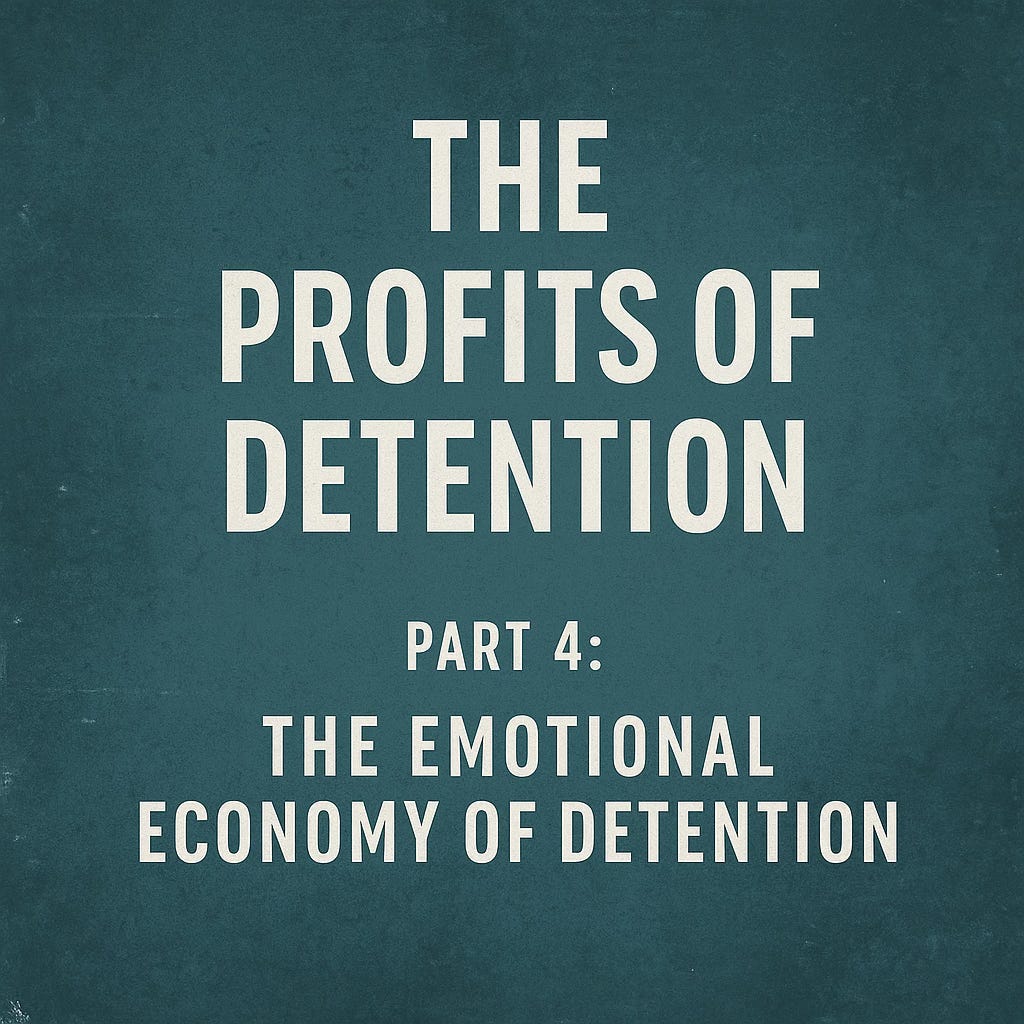"We are spending billions to inflict harm—and calling it justice."
The Real Cost Is Not Just Money
The cost of migrant detention isn’t just financial. It’s emotional. It’s relational. It’s moral. And it’s compounding.
Because when we fund detention, we don’t just fund facilities. We fund grief. We subsidize anxiety. We underwrite trauma.
Family Systems in Collapse
Families are not abstract concepts—they are systems of belonging, stability, and trust. When a parent is detained, a child doesn't just lose a caregiver—they lose their sense of safety. That single action ripples outward. The home becomes unstable, schools lose students, neighborhoods become silent with fear. This damage is not a one-time disruption—it is a breach of trust that takes years, if not generations, to repair.
Children of detainees suffer in ways that are often invisible but deeply scarring. Nightmares and separation anxiety become common. Academic performance drops. Social withdrawal and hypervigilance take root. A child who once felt confident now whispers when asking questions. A teenager misses school to care for siblings, all while wondering if their family will be whole again.
Inside the Walls: The Erosion of Self
Inside the facilities, detainees experience not just confinement, but erosion. Days stretch without answers. Medical needs are delayed or ignored. Communication with loved ones becomes a luxury. Some are denied basic hygiene items or are forced to purchase them with money they don’t have. There’s little clarity about timelines or hearings. Each day deepens the uncertainty. Detainees don’t count the hours because they don’t know if they are near the end—or the beginning of something worse.
This isn’t just about conditions. It’s about design. For-profit detention centers are incentivized to cut costs, not to care. Every dollar spent on human dignity is a dollar that doesn't show up in quarterly profit reports. So, dignity is the first to go.
The Inverse of Flourishing
Viewed through the PERMAH model of flourishing, detention doesn't just fall short—it actively reverses what humans need to thrive. Hope is replaced by fear. Engagement by disempowerment. Trust by surveillance. Purpose by stagnation. Progress by delay. Health by deterioration. Flourishing is not just denied; it is dismantled.
The Cost to Us All
The emotional economy doesn’t stop at the barbed wire. We, as a society, absorb the moral cost. We normalize suffering. We justify the unjustifiable. We turn law into a substitute for ethics, allowing cruelty to be framed as order. And over time, we begin to forget that every detainee is a person. A parent. A worker. A neighbor.
What do we lose? We lose the moral clarity to distinguish between security and scapegoating. We lose the ability to recognize the slow burn of collective trauma. And we lose the thread of justice itself, allowing economic interests to dictate whose pain is profitable.
When the Micro-Moment Breaks
Consider the micro-moments: a child breaking down during a video call, unable to understand why their mother can't come home. A father detained for a minor paperwork error, watching his family unravel from afar. A woman giving birth alone, in shackles, with no one to hold her hand or witness her pain. These are not exceptions—they are embedded in the system’s design.
These moments fracture the public trust. They destroy the chance for healing. And they erode our capacity to admire the institutions meant to protect us. Because no one admires cruelty dressed in legality.
Looking Ahead
In the final installment of this series, we’ll explore what could come next. A vision of safety that centers care, not cages. A system that honors humanity rather than harvesting it. Because if we can design for-profit pain, we can also design public dignity.
🎙️ Part 5: From Cages to Care
Podcast Title: Designing Dignity: What Comes After Detention
Read the Post
Listen to the Podcast
We end with a vision of what’s possible: community-based alternatives, THX audits of humane facilities, a blueprint for policy redesign, and ten transformative questions to reframe the immigration debate.




